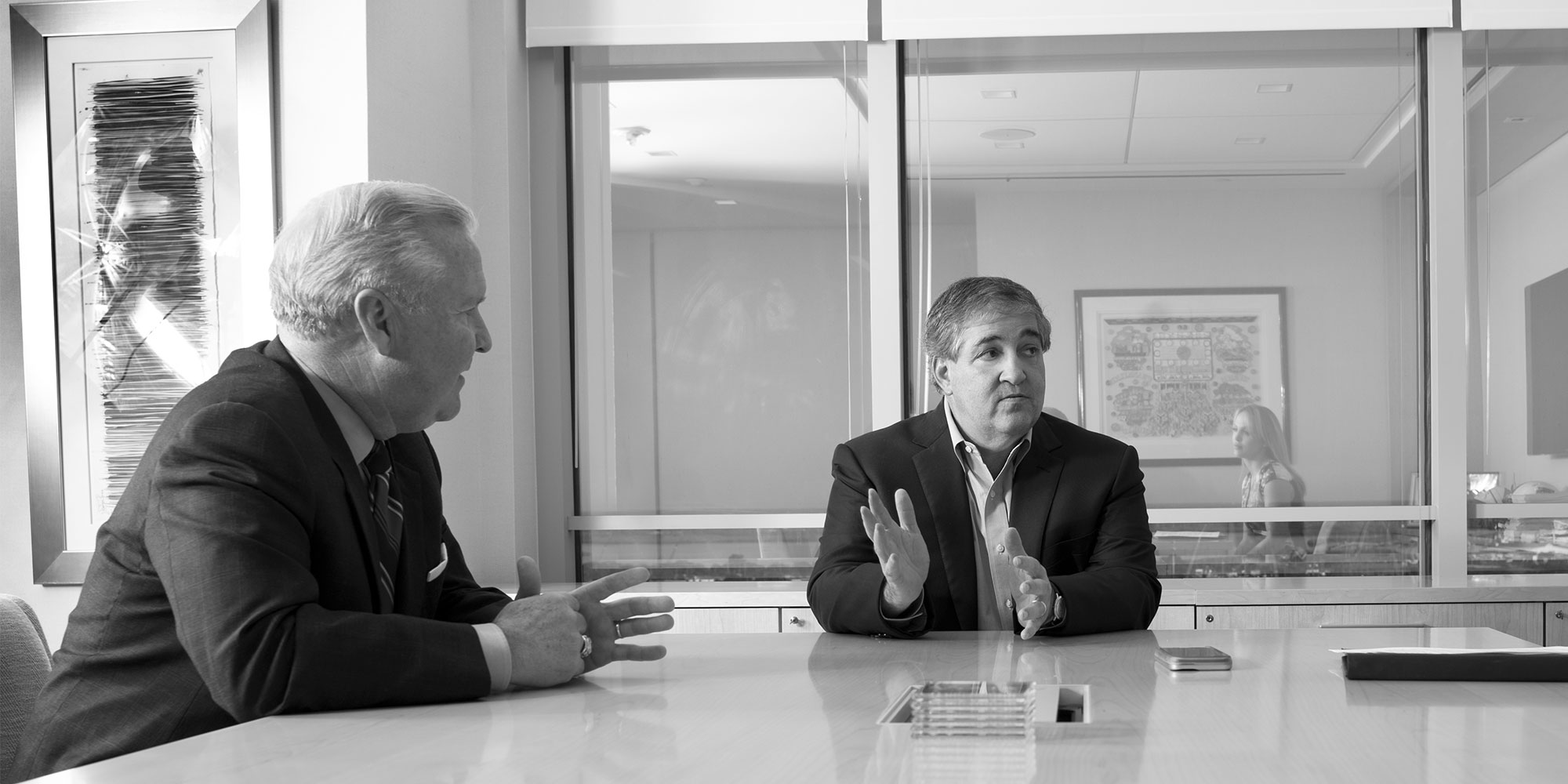Originally published in the February/March 2017 edition of TAMPA Magazine
In late 2016, TAMPA Magazine sat down with real estate developer and Tampa Bay Lightning owner Jeff Vinik and then-Tampa Mayor Bob Buckhorn to discuss the growth of Downtown Tampa. Though it doesn’t seem like much time, the Tampa of today is already dramatically different from the one in which the two leaders outlined their vision for “building half a city.” Strategic Property Partners, a joint venture between Vinik and Bill Gates’ Cascade Investment, LLC, had yet to begin construction on the 50-acre Water Street Tampa project. Buckhorn’s goal of activating the city’s downtown waterfront was only starting to become a reality. Much of what we discussed has begun coming to fruition, making an immediate impact on the city. Here, we’re revisiting excerpts of our 2016 interview to examine how far Tampa has come in just under four years.
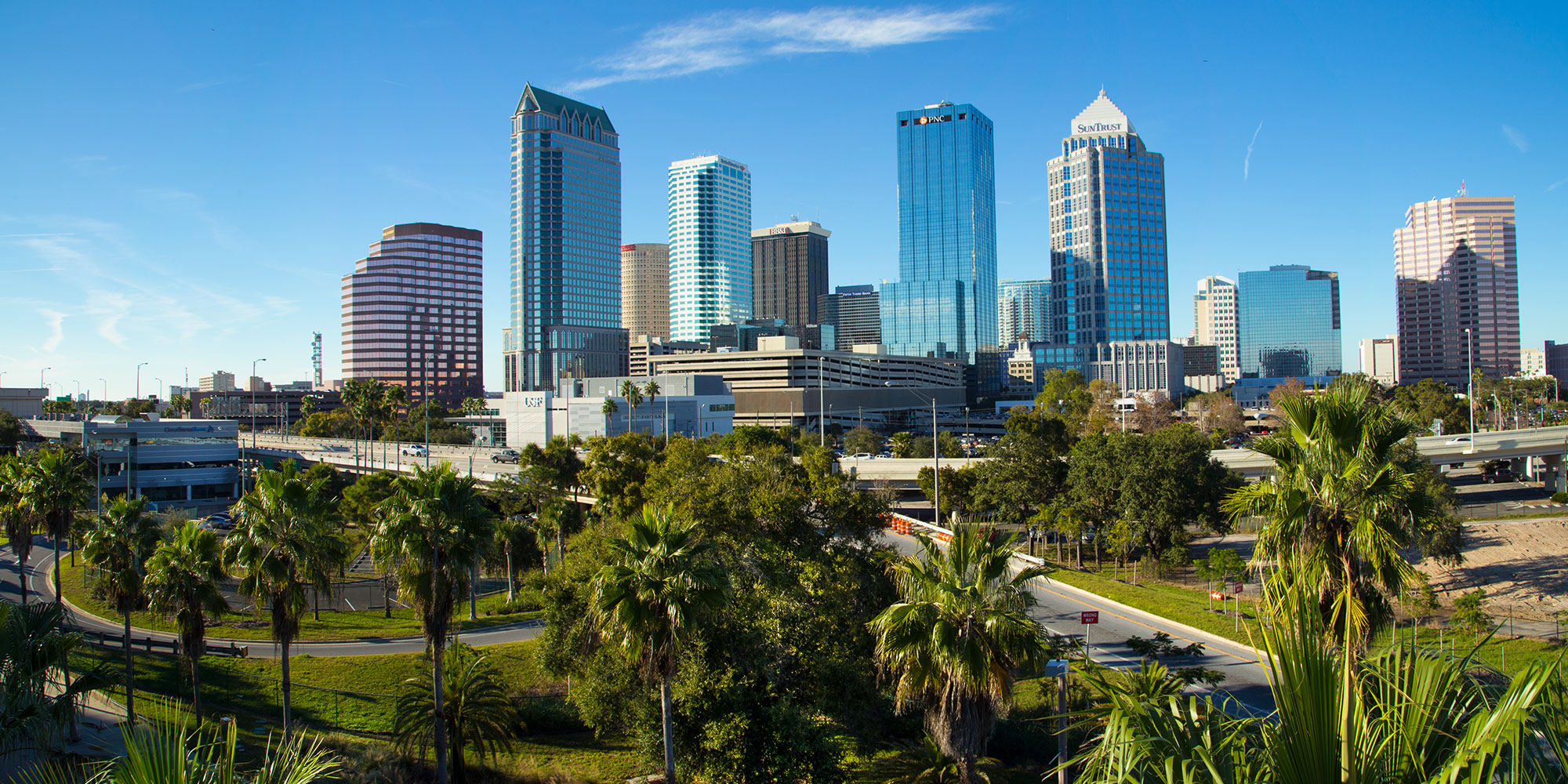
LIVING & WORKING DOWNTOWN
2016: Buckhorn estimated about 60,000 people worked in Downtown Tampa, while 8,000 people lived downtown and on Harbour Island. At the time, he and Vinik anticipated an additional 3,000 to 4,000 residential units coming online in the following 18 to 24 months.
2020: The Tampa Downtown Partnership’s biannual worker-resident survey found that closer to 66,000 people worked downtown in 2016, a number that has since risen to around 72,000. That figure likely will continue to rise, as 522,000 square feet of downtown office space was under construction at the end of 2019.
Downtown residency is also growing rapidly. Close to 12,000 residents live in the downtown core (as of late 2019), and more than 1,800 residential units opened between 2016 and 2018. As 2019 drew to a close, an additional 1,664 units were under construction in buildings like 815 Water Street.
2016: “We’re not building an entertainment district. We’re not building an arena district. We’re building half a city,” Vinik said. “We’re building a vibrant, walkable urban district with high density, which has the arena as one of the great amenities of the district.”
2020: As anyone who lives near or has driven through the southern region of downtown in the past year can attest, the area that surrounds Amalie Arena is unrecognizable. Dozens of cranes and thousands of construction workers make the soon-to-be Water Street Tampa district look and feel like New York City.
Of the projects Vinik mentioned, USF’s Morsani College of Medicine and Heart Institute (which will soon house a Tampa General Hospital walk-in clinic and the USF Taneja College of Pharmacy) has opened, along with part of the office space being built above Sparkman Wharf. The Tampa Marriott Water Street, which is now part of the district, completed a $50 million renovation last year, while the J.W. Marriott across the street is on schedule to open at the end of this year.
Construction is well underway on 815 Water Street (slated to open by the end of 2020) and 1077 Water Street, two of three residential towers in the district. Work is also in progress on the office buildings 1001 Water Street and 400 Channelside, along with the Tampa Edition. Complete with 36 condominiums, the Edition will be the city’s first five-star hotel. Public art is dotted throughout the district, most clearly seen now in the murals at Sparkman Wharf’s dining garden and park.
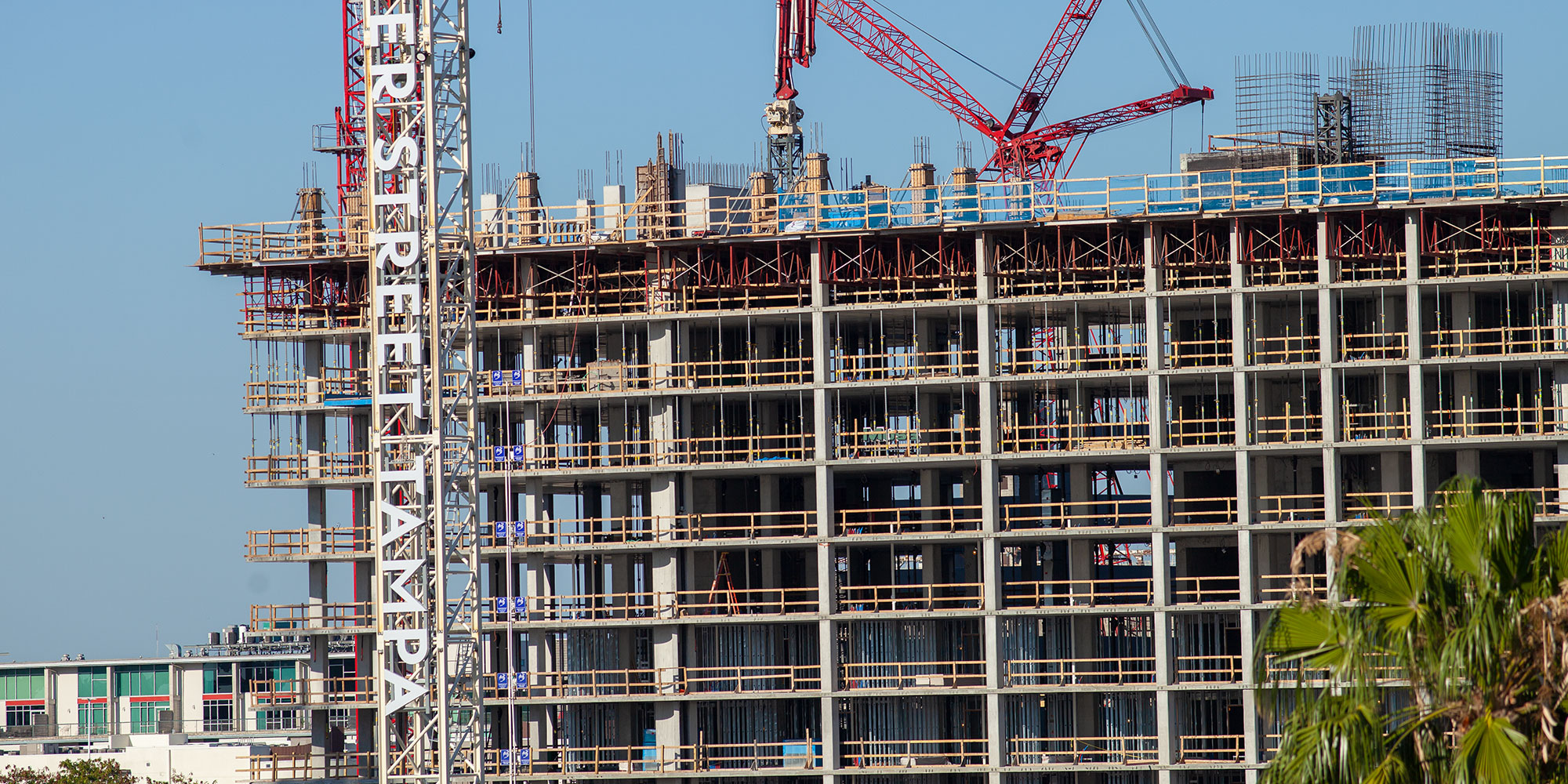
2016: “What we’re doing in our district, not only will our buildings try to be WELL Certified, the whole district is going to be WELL Certified,” Vinik said.
2020: In May 2019, Water Street Tampa developer Strategic Property Partners announced the district had become the first neighborhood to achieve the WELL Design & Operations designation. This certification recognizes the district’s design and policy strategies that incorporate concepts to benefit residents and workers’ physical and mental health.
Some of the elements that contributed to the certification include wide, light-colored sidewalks, water bottle filling stations, urban water features and green spaces.
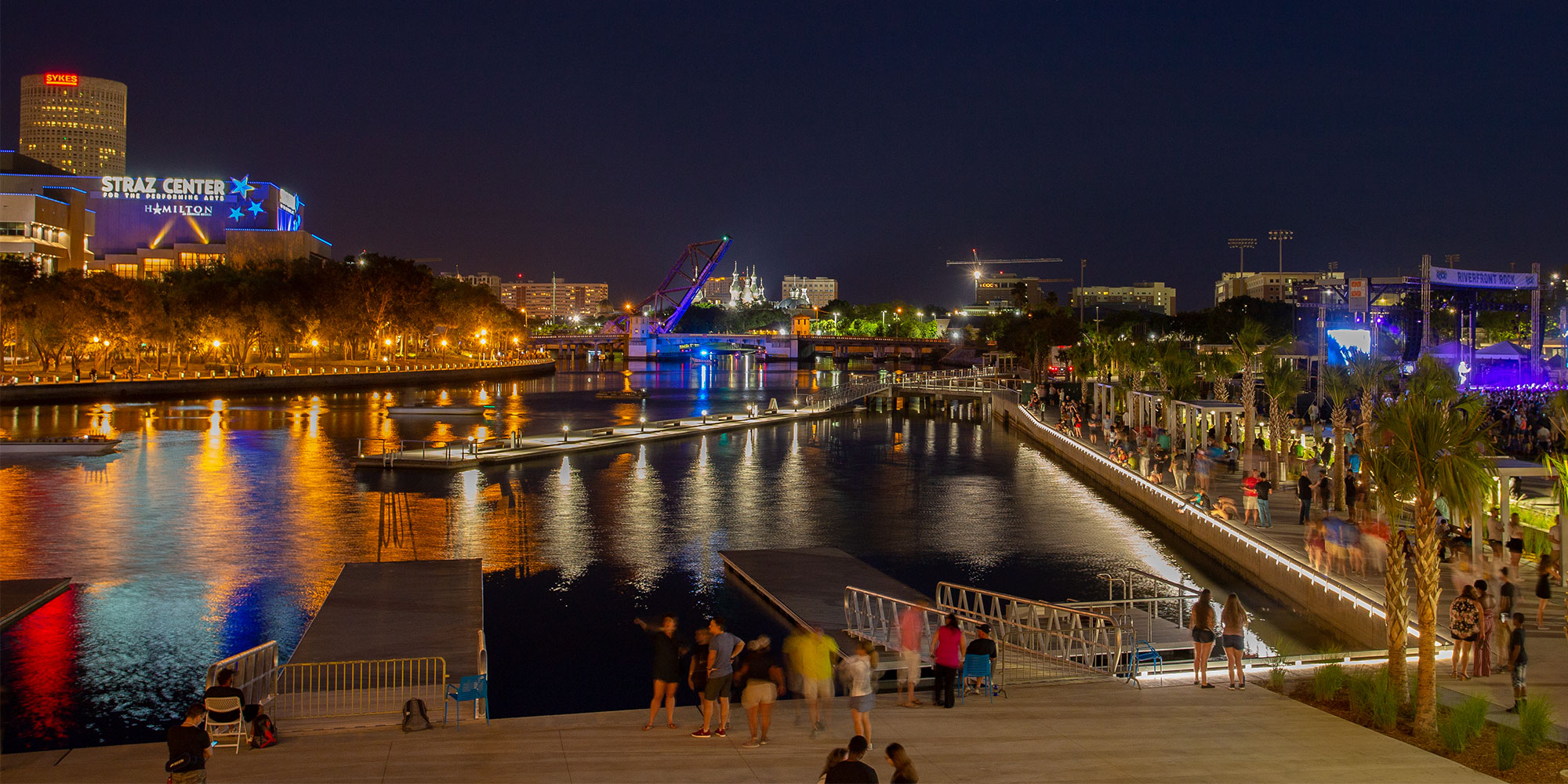
PARKS & AMENITIES
2016: “I think we probably have added more urban parks, particularly in the downtown area, than any [administration] has ever,” Buckhorn said. “I think when we’re done our downtown will be very green. It will be very user-friendly.”
2020: By the end of 2019, Downtown Tampa had 12 public parks, including three dog parks. At the time of the 2016 interview, the city of Tampa was completing construction on the $35 million Julian B. Lane Riverfront Park, which has since become a go-to venue for major events like the Gasparilla Festival of the Arts and Tampa Bay Margarita and Music Festival. The Channel District is also awaiting the grand opening of the Madison Street Park, delayed due to the pandemic.
2016: “Our Channelside Bay Plaza — we’ve previewed some of those plans publicly, and there’s a beautiful park that we plan to put there right on the water also,” Vinik said.
2020: The first piece of Water Street Tampa to open was Sparkman Wharf in November 2018. An outdoor dining garden and waterfront park, Sparkman Wharf often hosts live music, movie nights and watch parties, and fresh markets. The former storefronts and restaurants of Channelside Bay Plaza have been completely overhauled (Splitsville is the only remaining original tenant), with new eateries and shops moving into the first floor and loft-style office space on the second floor.
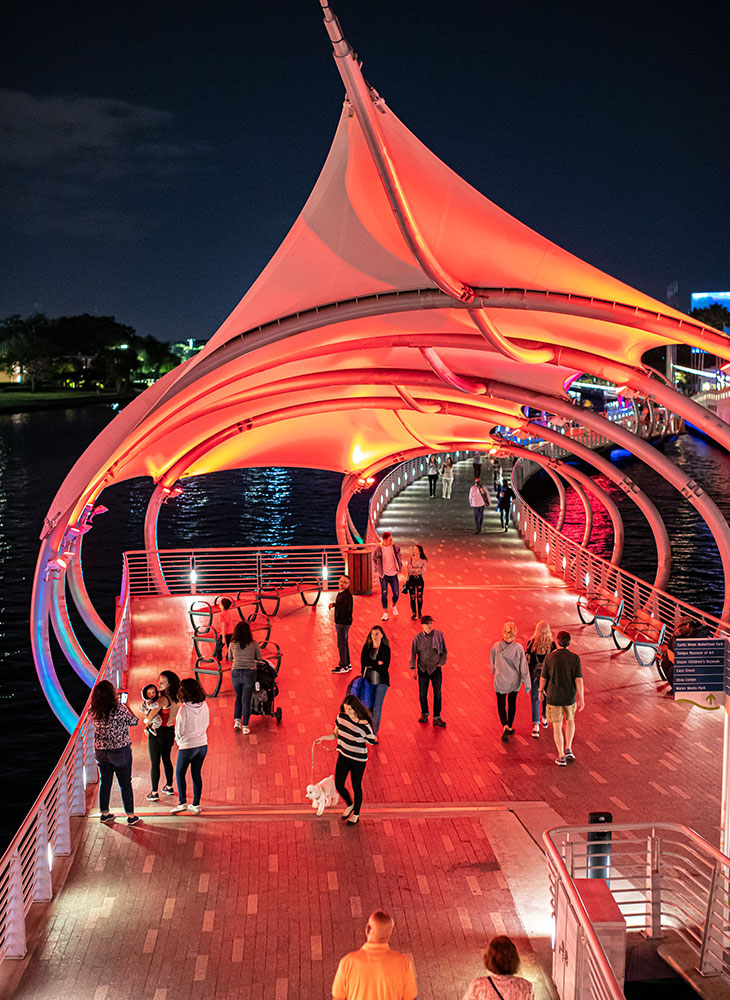
TAMPA RIVERWALK
2016: “The one thing that we have that most other cities don’t have is the water,” Buckhorn said. “That is the great gathering point now. It didn’t used to be, but it is now, and we need to maximize it.”
2020: The 2.4-mile Tampa Riverwalk has been described as the city’s necklace, connecting jewels of Tampa’s cultural, recreational and dining scenes along the Hillsborough River. According to the Tampa Downtown Partnership’s 2018 worker-resident survey, the Riverwalk was mentioned seven times more frequently as a reason for living or working downtown than any other asset. Currently, construction is underway to extend the Riverwalk past its current endpoint at Armature Works toward the North Boulevard bridge.
2016: “There will be a [Riverwalk] connection going across the Hillsborough River to the west bank area. That comes into play with the park [Riverfront Park] that the mayor was talking about,” Vinik said.
“My hope is eventually that you can start at [the intersection of] Gandy and Bayshore, and you can run all the way downtown and pick the side of the river that you choose to go on,” Buckhorn added. “Ideally, in 10 years, hopefully less, you’ll be able to choose the side of the river on which you choose to walk, run or ride. And then you can make the whole circuit and connect to Bayshore and all the way down to Gandy.”
2020: While an over-water connection between the two sides has not yet been constructed (at the time, Buckhorn suggested that a new pedestrian bridge could be built below Brorein Street), there is now a simple waterside pathway along the west side of the Hillsborough River that runs parallel to the Riverwalk. All property owners on the west side of the river were mandated to add segments of the path on their land in recent years. Now, the path runs from the Manor Riverwalk apartments in the south to the North Boulevard bridge. In March, construction began on three apartment buildings in the West River redevelopment project (on the site of the former North Boulevard Homes), which will contain sidewalks and paths that will connect the existing trail up to Columbus Drive.
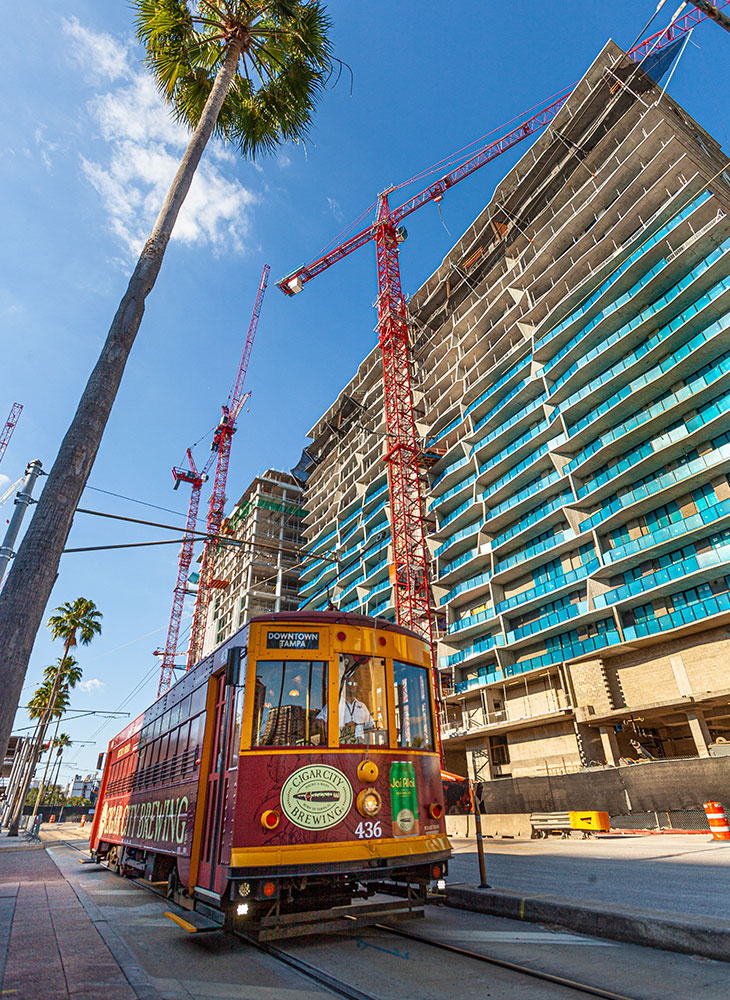
TRANSPORTATION
2016: “We’re looking at the expansion of the streetcar potentially up Florida Avenue, perhaps even as far up as Tampa Heights, because as you think about the redevelopment of Tampa Heights and the Armature Works building there, you want the ability to connect all the segments of the city,” Buckhorn said. “If you can get from Ybor City to Tampa Heights to downtown in a continuous loop with a reasonable cost and hour that make sense, then all of a sudden you’ve started to connect the entire area and people truly can live, work and play.”
2020: Since our interview with Buckhorn and Vinik, the one-cent All for Transportation sales tax passed in Hillsborough County but is currently being appealed in the Florida Supreme Court. Still, the city and Hillsborough Area Regional Transit
Authority are solidifying plans for a streetcar extension north to Palm Avenue. The extra 1.3 miles would connect Ybor City and the Channel District up to Tampa Heights, through downtown’s central business district. Thanks to an FDOT grant, the TECO Line Streetcar went fare-free in October 2018, resulting in a 180% increase in ridership in just one year.
Other additions to Tampa’s transportation landscape since our interview have included the seasonal Cross-Bay Ferry, e-scooters, an expansion of the Howard Frankland Bridge, and an autonomous shuttle in downtown’s Marion Street corridor (a pilot program under consideration by HART that could start this summer).


